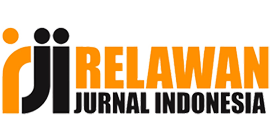STRATEGI MANAJEMEN UNTUK MENANGANI STRES SERTA TUGAS YANG TUMPANG TINDIH GUNA MENGOPTIMALKAN PRODUKTIVITAS KERJA DI ERA MODERN
DOI:
https://doi.org/10.31539/cwaxpt11Keywords:
Work Stress, Overlapping Tasks, Management Strategies, Employee ProductivityAbstract
Employee productivity is a key indicator of an organization’s success in achieving its goals. However, several factors can hinder optimal productivity, including work stress and overlapping tasks. Work stress arises from excessive pressure, while overlapping tasks occur when employees are assigned multiple responsibilities that intersect, leading to confusion in task execution. This study aims to analyze management strategies for addressing work stress and overlapping tasks in order to sustain employee productivity. The research method employed is a literature review, examining stress management theory, productivity theory, and organizational case studies in Indonesia. The findings indicate that effective management can be achieved through workload regulation, clear communication, targeted training, and psychosocial support. The study concludes that structured management strategies can reduce stress levels, minimize the negative effects of overlapping tasks, and enhance employee productivity.
References
American Psychological Association. (2020). Work and well-being survey: Stress at work. APA. https://www.apa.org
Badan Pusat Statistik. (2023). Keadaan ketenagakerjaan Indonesia Agustus 2023. Jakarta: BPS. https://www.bps.go.id
Bakker, A. B., & Demerouti, E. (2017). Job demands–resources theory: Taking stock and looking forward. Journal of Occupational Health Psychology, 22(3), 273–285. https://doi.org/10.1037/ocp0000056
Beehr, T. A., & Glazer, S. (2019). Organizational role stress. In G. Fink (Ed.), Stress: Concepts, cognition, emotion, and behavior (pp. 463–470). Academic Press.
Creswell, J. W. (2018). Research design: Qualitative, quantitative, and mixed methods approaches (5th ed.). SAGE.
Fahmi, I. (2021). Manajemen sumber daya manusia: Teori dan aplikasi. Jakarta: Rajawali Pers.
Ghozali, I. (2020). Manajemen stres kerja di organisasi modern. Semarang: Badan Penerbit UNDIP.
Greenberg, J. (2017). Comprehensive stress management (14th ed.). McGraw-Hill Education.
Handoko, T. H. (2020). Manajemen personalia dan sumber daya manusia. Yogyakarta: BPFE.
International Labour Organization. (2022). Mental health at work: Policy brief. Geneva: ILO. https://www.ilo.org
Karasek, R., & Theorell, T. (1990). Healthy work: Stress, productivity, and the reconstruction of working life. Basic Books.
Kreitner, R., & Kinicki, A. (2018). Organizational behavior (11th ed.). McGraw-Hill Education.
Luthans, F. (2019). Organizational behavior: An evidence-based approach (14th ed.). McGraw-Hill Education.
Mangkunegara, A. A. A. P. (2019). Manajemen sumber daya manusia perusahaan. Bandung: Remaja Rosdakarya.
Robbins, S. P., & Judge, T. A. (2019). Organizational behavior (18th ed.). Pearson.
Schaufeli, W. B., & Bakker, A. B. (2020). Job demands, job resources, and their relationship with burnout and engagement: A multi‐sample study. Journal of Organizational Behavior, 25(3), 293–315. https://doi.org/10.1002/job.248
Sonnentag, S., & Frese, M. (2017). Stress in organizations. In J. Greenberg (Ed.), Work and health psychology (pp. 453–491). Psychology Press.
Spector, P. E. (2019). Industrial and organizational psychology: Research and practice (8th ed.). Wiley.
Sutrisno, E. (2020). Manajemen sumber daya manusia. Jakarta: Kencana.
Taris, T. W., & Schaufeli, W. B. (2016). The job demands–resources model. In S. Clarke, T. M. Probst, F. Guldenmund, & J. Passmore (Eds.), The Wiley Blackwell handbook of the psychology of occupational safety and workplace health (pp. 157–180). Wiley.
Downloads
Published
Issue
Section
License
Copyright (c) 2025 Aprihatino Utomo, Jumadi Jumadi, Novi Misna Yanti, Hadi Supratikta

This work is licensed under a Creative Commons Attribution-NonCommercial 4.0 International License.


